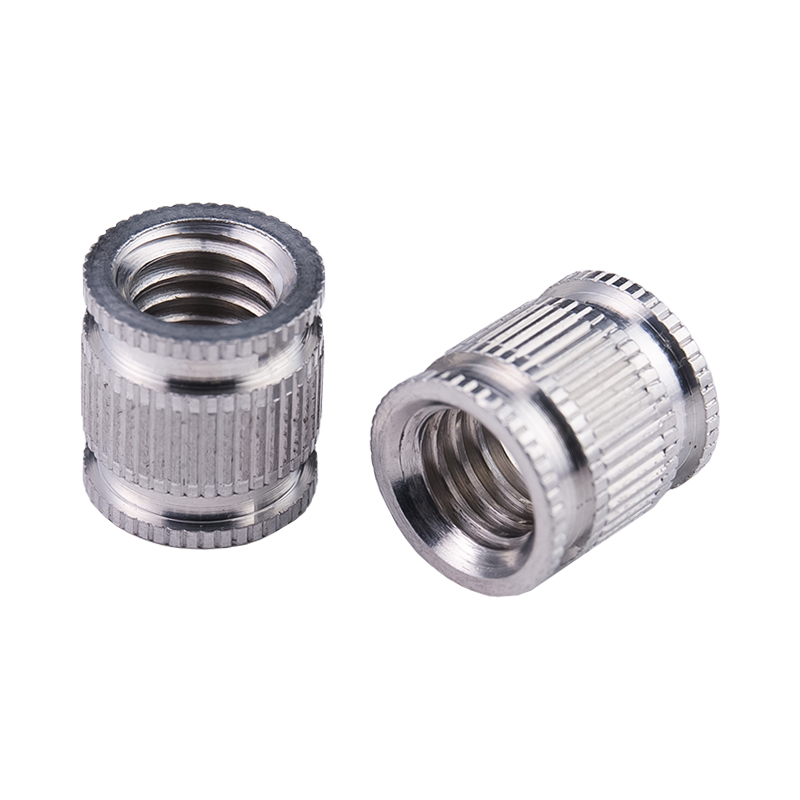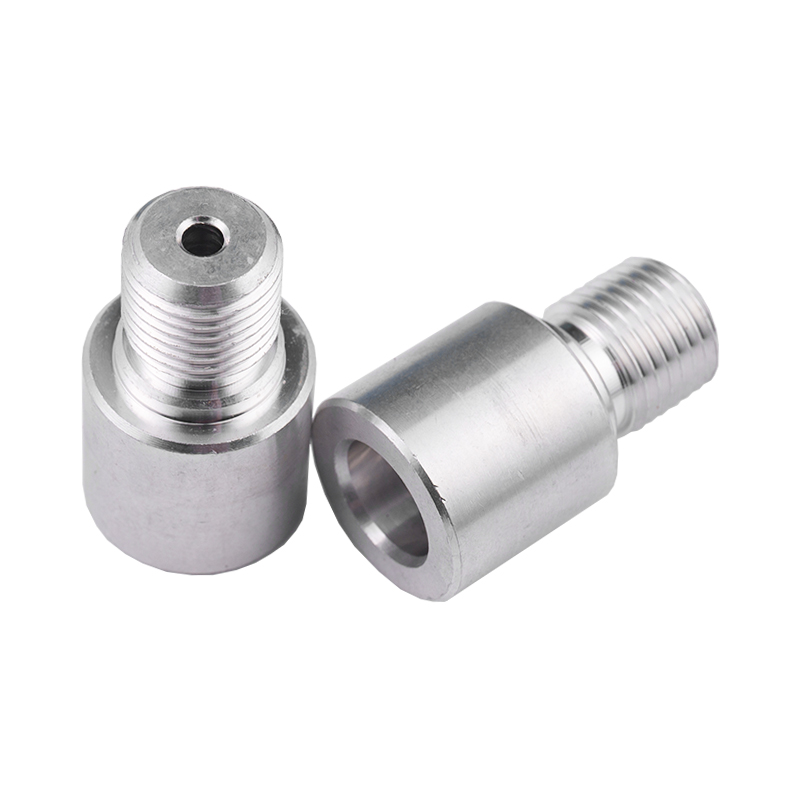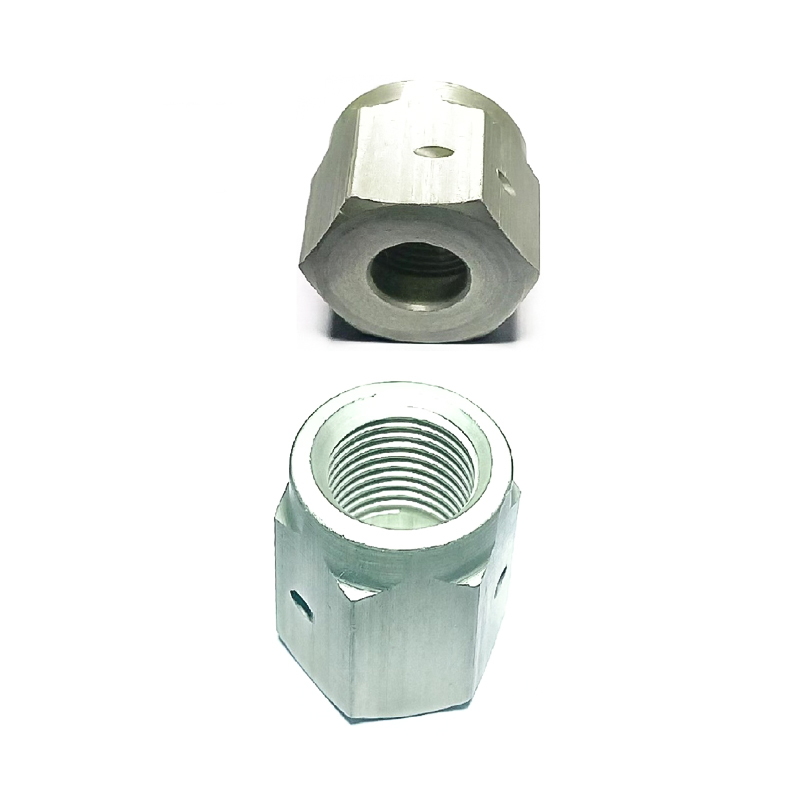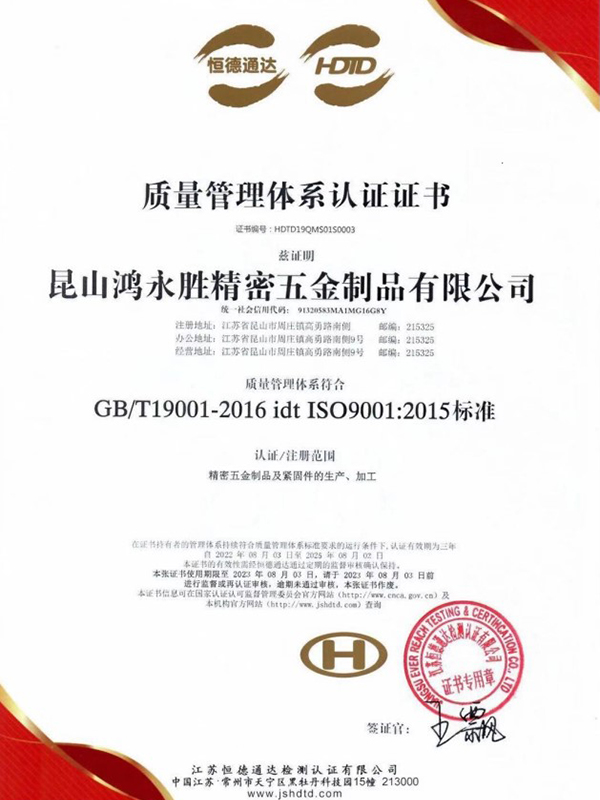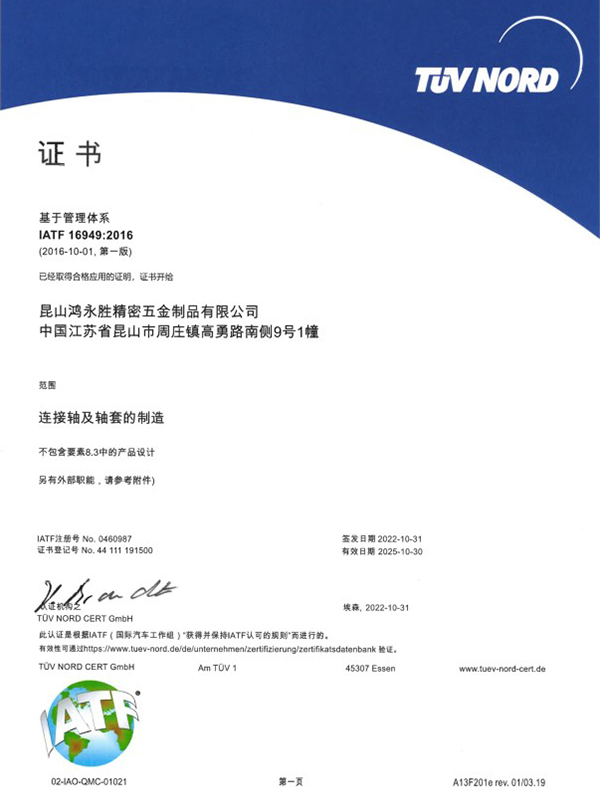Carbon Steel Bolt Supplier Guide: What Buyers Should Look For Selecting the right supplier for carbon steel bolts affects product performance, safety, and long-term cost. This guide breaks down the p...
READ MOREThe company has obtained two quality system management certificates of ISO9001:2015 and IATF16949:2016.
At present, the company has been for Japan, Sweden, the United States, Singapore, Malaysia, Hong Kong and the Pearl River Delta and many other customers to provide services, now the main customers are: Japan Sharp (SHARP), Japan SMC, Japan Panasonic (Panasonic), the Swedish automobile VOVOL, etc., all the fixed assets investment of more than 30 million dollars, welcome friends from all walks of life to the factory to visit, study, consulting and come! We welcome friends from all walks of life to visit our factory, investigate, consult and come to us for sample processing.
We are looking forward to establishing a good business partnership with you with mutual trust and reciprocity!
-
-
Introduction: The Foundation of Mechanical Systems In the intricate world of modern manufacturing and engineering, machined parts form the fundamental building blocks of virtually every mechanical sys...
READ MORE -
Why Structural Integrity Matters In construction, machinery, and other industrial applications, structural integrity is crucial for safety, performance, and longevity. One of the key elements in ensur...
READ MORE -
Introduction to Stainless Steel Fasteners Stainless steel fasteners are widely used in construction, machinery, and industrial applications due to their corrosion resistance and durability. Among them...
READ MORE
How do you properly install and torque non-standard aluminum nuts to ensure proper functionality and safety?
Before installation, ensure that the threads on both the nut and the bolt or stud are clean and free of any debris, dirt, or grease. This helps to ensure proper engagement and torque accuracy.
Use appropriate tools for installation, such as a calibrated torque wrench. Avoid impact tools, as they can apply uneven or excessive force, potentially damaging the nut or the mating surface.
Depending on the specific application and the type of aluminum nut being used, applying a suitable lubricant to the threads may be necessary to prevent galling or seizing during installation. However, be cautious not to over-lubricate, as this can affect torque accuracy.
Initially, hand tighten the nut onto the bolt or stud until it makes contact with the mating surface.
Using a torque wrench, apply the specified torque gradually and evenly in a clockwise direction. Refer to the manufacturer's recommendations or engineering specifications for the appropriate torque value.
After torquing, recheck the torque using the torque wrench to ensure that it matches the specified value. This helps to confirm that the nut has been properly tightened and will provide adequate clamping force.
Inspect the nut to ensure that it is fully engaged with the bolt or stud and that there are no signs of cross-threading or misalignment.
Once the nut is properly torqued and secured, verify that the assembly is functioning as intended and that there are no signs of loosening or movement.
Depending on the application and material properties, non-standard aluminum nuts may experience some settling or relaxation over time. Periodically inspect and re-torque the nuts as necessary to maintain proper clamping force and functionality.
How do factors such as corrosion, oxidation, and fatigue affect the durability of non-standard aluminum nuts over time?
Aluminum is naturally resistant to corrosion due to its ability to form a protective oxide layer on its surface. However, in certain environments, such as those with high levels of moisture, salt, or acidic substances, aluminum nuts can still corrode, particularly if the oxide layer is compromised. Corrosion can weaken the structural integrity of the nut, leading to premature failure or reduced clamping force.
While aluminum's oxide layer provides corrosion resistance, it can also be susceptible to oxidation in certain conditions, such as high temperatures or exposure to oxygen-rich environments. Oxidation can lead to the formation of aluminum oxide (alumina) on the surface of the nut, which may affect its appearance and potentially impair its functionality if not properly managed.
Like any material, aluminum is susceptible to fatigue failure when subjected to repeated loading and unloading cycles, especially if the applied loads are near or exceed the material's fatigue strength. Fatigue cracks can initiate at stress concentration points, such as threads or surface imperfections, and propagate over time, ultimately leading to failure of the nut.
To mitigate the effects of these factors and enhance the durability of non-standard aluminum nuts:
Use aluminum alloys with enhanced corrosion resistance, such as those specifically designed for marine or aerospace applications.
Apply surface treatments or coatings, such as anodizing or protective coatings, to improve corrosion and oxidation resistance.
Design nuts with smooth, rounded thread profiles and minimize stress concentrations to reduce the likelihood of fatigue initiation.
Implement proper installation techniques, including using appropriate torque values and lubrication, to ensure optimal performance and longevity.



 русский
русский Español
Español